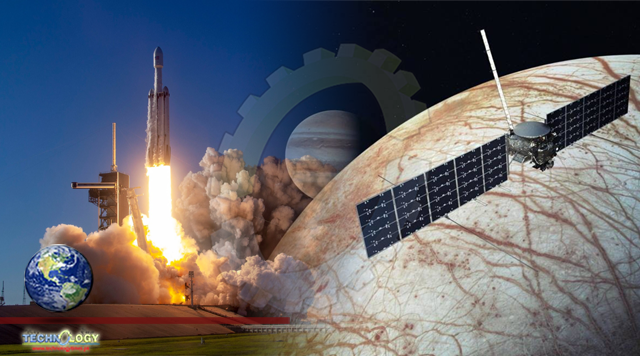NASA predicts that beneath Jupiter’s icy moon Europa lies a salty ocean with more water than all of Earth’s oceans combined. To see whether the moon could harbor conditions suitable for life, the agency is preparing to send a spacecraft on an interplanetary mission. The ride for that mission? A SpaceX Falcon Heavy rocket.

By Florina Spînu
NASA announced that its $4.25 billion Europa Clipper spacecraft will be launched from a SpaceX Falcon Heavy Rocket. This news represents a big win for Elon Musk’s company as it will get to finally venture deeper into the solar system.
Set to take off in October 2024, the Europa Clipper mission will launch from Kennedy Space Center in Florida, with a total contract value of $178 million. Previously, the mission was scheduled to launch on NASA’s Space Launch System (SLS) rocket, a super heavy-lift expendable launch vehicle that is expected to carry future crewed lunar flights of the Artemis program and possible follow-on human missions to Mars.
However, technical concerns and performance issues plagued the SLS core stage, booster, and RS-25 engine programs, causing delays and cost overruns in the last years.
While the SLS has yet to have its first launch, the Falcon Heavy has been flown on multiple commercial and government missions since its maiden flight in 2018, when it carried Musk’s Tesla Roadster into orbit.
Once launched from the SpaceX rocket, the Europa Clipper probe will orbit around Jupiter and make about 40 to 50 close passes over the icy moon, modifying its flight path for every flyby to soar over different regions until it scans nearly the whole moon.
The spacecraft will make use of a complex collection of research sensors to see if the frozen satellite has conditions suitable for alien life. The mission’s goal is to capture high-resolution images of Europa’s surface, determine its composition, hunt for signs of geological activity, search for subsurface lakes, and determine how deep is the ocean that lies underneath the thick frozen crust.
Oriinally published at Auto evolution